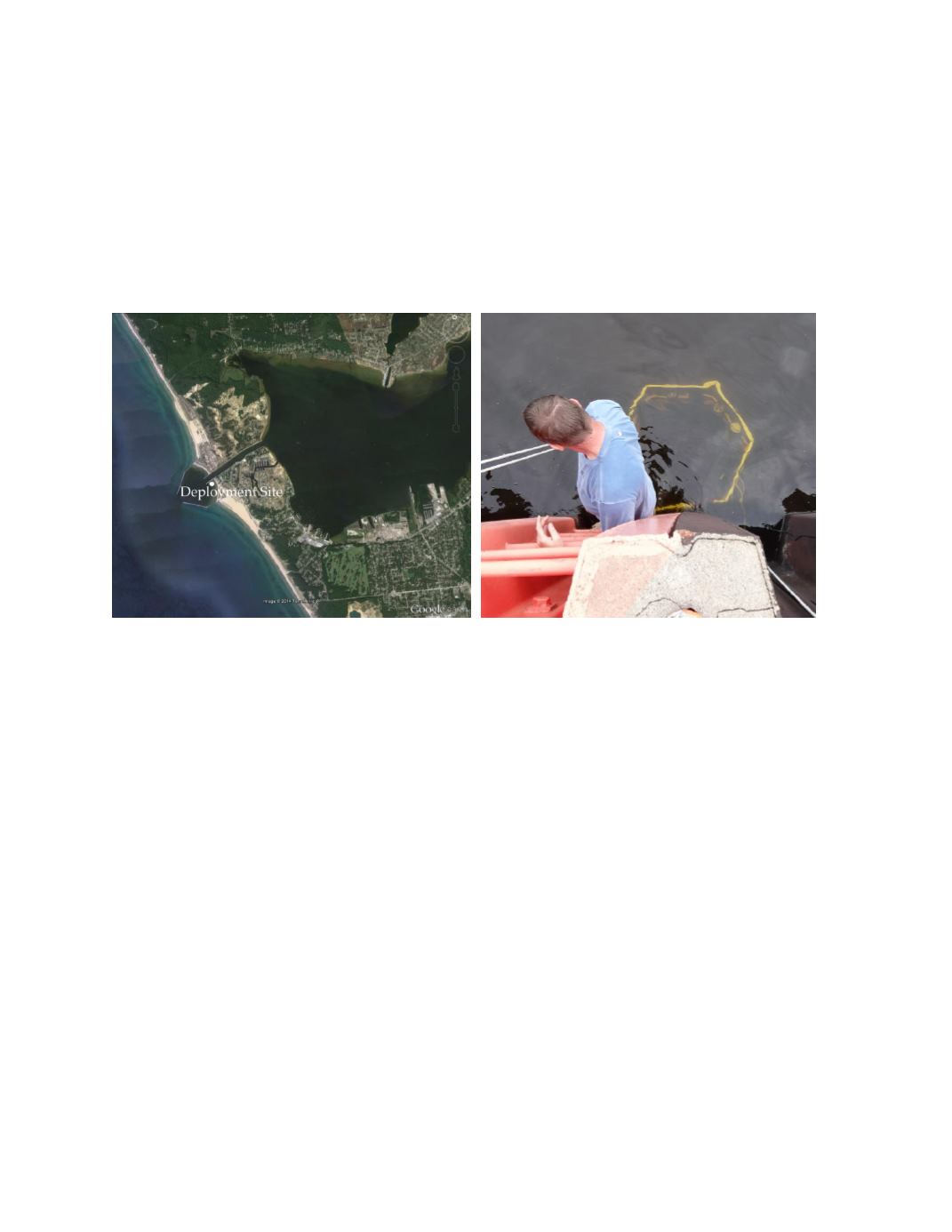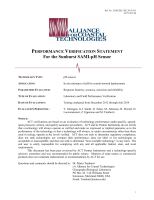

Ref. No. [UMCES] CBL 2015-013
ACT VS15-06
Great Lakes Field Test Site
A month-long moored field test was conducted in Lake Michigan from June 21 to July
19, 2014. The Great Lakes deployment site was located at 43.23°N, 86.34°W on a fixed pier at
the Lake Michigan Field Station of the NOAA Great Lakes Environmental Research Laboratory,
in Muskegon, Michigan. The site is located at the outfall of Lake Muskegon into Lake Michigan
with a depth of approximately 3 meters. The temperature range during deployment was 11.6°C
through 24.9°C and salinity averaged 0.031.
Photo 8.
Aerial view of Lake Michigan and Muskegon Lake (left) and rack deployment at GL Site
Two SAMI-pH units were deployed at this test site, one equipped with MetaCresol
Purple (mCP) as the indicator dye and one with Phenol Red (PR) as the indicator dye. The
Phenol Red dye was considered to be experimental for the company at the time and being tested
for appropriateness in freshwater. The ACT reference pH samples were determined using a
Phenol Red dye prepared in Dr. Bob Byrne’ lab at the University of S. Florida. Time series
results of ambient conditions for tidal height, temperature, and salinity are given in figure 17.
Temperature ranged from 11.6 to 24.9 and salinity from 0.024 to .035 over the duration of the
field test. While there are no tidal cycles at this site there was significant exchange between the
open lake and the protected basin where the mooring was located as evidenced by significant
changes in salinity and water depth. The bottom panel displays the maximum difference recorded
between all reference thermistors (RBR Solo and SBE26) mounted at the same depth and
different locations across the mooring rack. The average temperature difference observed across
the space of the mooring rack was 0.08 ±0.18
o
C, with a maximum of 2.53
o
C. As noted above,
it is not possible to quantify the exact difference between the averaged reference temperature and
that measured by the test instrument, but differences resulting from this variation and variation in
the chemistry of the water across will be minimized because the sampling bottle integrates across
the mooring space.
The SAMI-pH (PR) unit operated throughout the entire deployment and generated 2654
observations based on its 15 minute sampling interval, plus 11 timepoints used for internal
calibration (Fig. 18). However, 51 of the observations had significantly higher offsets from the
SAMI-pH (mCP) unit, as well as the dye reference, and those data are of uncertain quality and
41

















